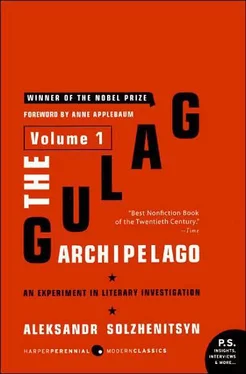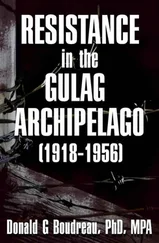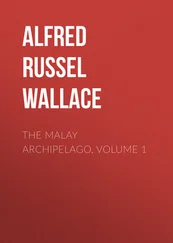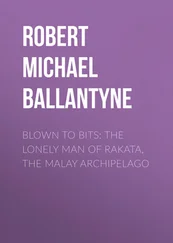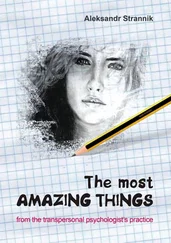When the Provisional Government came to power, it abolished capital punishment entirely. In July, 1917, however, it was reinstated in the active army and front-line areas for military crimes, murder, rape, assault, and pillage (very widespread in those areas at that time). This was one of the most unpopular of the measures which destroyed the Provisional Government. The Bolsheviks’ slogan before the Bolshevik coup d’etat was: “Down with capital punishment, reinstated by Kerensky!”
A story has come down to us that on the night of October 25-26 a discussion arose in Smolny as to whether one of the first decrees shouldn’t be the abolition of capital punishment in perpetuity—whereupon Lenin justly ridiculed the idealism of his comrades. He, at any rate, knew that without capital punishment there would be no movement whatever in the direction of the new society. However, in forming a coalition government with the Left SR’s, he gave in to their faulty concepts, and on October 28, 1917, capital punishment was abolished. Nothing good, of course, could come from that “goody-goody” position. (Yes, and how did they get rid of it? At the beginning of 1918, Trotsky ordered that Aleksei Shchastny, a newly appointed admiral, be brought to trial because he had refused to scuttle the Baltic Fleet. Karklin, the Chairman of the Verkhtrib, quickly sentenced him in broken Russian: “To be shot within twenty-four hours.” There was a stir in the hall: But it has been abolished! Prosecutor Krylenko explained: “What are you worrying about? Executions have been abolished. But Shchastny is not being executed; he is being shot.” And they did shoot him.)
If we are to judge by official documents, capital punishment was restored in all its force in June, 1918. No, it was not “restored”; instead, a new era of executions was inaugurated. If one takes the view that Latsis [259]is not deliberately understating the real figures but simply lacks complete information, and that the Revtribunals carried on approximately the same amount of judicial work as the Cheka performed in an extrajudicial way, one concludes that in the twenty central provinces of Russia in a period of sixteen months (June, 1918, to October, 1919) more than sixteen thousand persons were shot, which is to say more than one thousand a month. [260](This, incidentally, is when they shot both Khrustalev-Nosar, the Chairman of the 1905 St. Petersburg Soviet—the first Russian soviet—and the artist who designed the legendary uniform worn by the Red Army throughout the Civil War.)
However, it may not even have been these individual executions, with or without formally pronounced death sentences, which added up to thousands and inaugurated the new era of executions in 1918 that stunned and froze Russia. Still more terrible to us was the practice—initially followed by both warring sides and, later, by the victors only—of sinking barges loaded with uncounted, unregistered hundreds, unidentified even by a roll call. (Naval officers in the Gulf of Finland, in the White, Caspian, and Black seas, and, as late as 1920, hostages in Lake Baikal.) This is outside the scope of our narrow history of courts and trials, but it belongs to the history of morals, which is where everything else originates as well. In all our centuries, from the first Ryurik on, had there ever been a period of such cruelties and so much killing as during the post-October Civil War?
We would omit from view one of the characteristic ups-and-downs of the Russian capital-punishment story if we neglected to mention that capital punishment was abolished in January, 1920. Yes, indeed! And some students of the subject might conceivably be at a loss to interpret the credulity and helplessness of a dictatorship that deprived itself of its avenging sword when Denikin was still in the Kuban, Wrangel still in the Crimea, and the Polish cavalry were saddling up for a campaign. But, in the first place, this decree was quite sensible: it did not extend to the decisions of military tribunals, but applied only to extrajudicial actions of the Cheka and the decisions of tribunals in the rear. In the second place, the way was prepared for it by first cleaning out the prisons by the wholesale execution of prisoners who might otherwise have come “under the decree.” And, in the third place, it was in effect for a brief period—four months. (It lasted only until the prisons had filled up again.) By a decree of May 28, 1920, capital punishment was restored to the Cheka.
The Revolution had hastened to rename everything, so that everything would seem new. Thus the death penalty was re-christened “the supreme measure”—no longer a “punishment” but a means of social defense. From the groundwork of the criminal legislation of 1924 it is clear that the supreme measure was introduced only temporarily, pending its total abolition by the All-Russian Central Executive Committee.
And in 1927 they actually did begin to abolish it. It was retained solely for crimes against the state and the army—Article 58 and military crimes—and, true, for banditry also. (But the broad political interpretation of “banditry” was as well known then as it is now: from a Central Asian “Basmach,” right up to a Lithuanian forest guerrilla, every armed nationalist who doesn’t agree with the central government is a “bandit,” and how could one possibly get along without that article? Similarly, any participant in a camp rebellion and any participant in an urban rebellion is also a “bandit.”) But where articles protecting private individuals were concerned, capital punishment was abolished to commemorate the tenth anniversary of the Revolution.
And for the fifteenth anniversary, the law of Seven-eighths was added to the roster of capital punishment—that law so vitally important to advancing socialism, which guaranteed the Soviet subject a bullet for each crumb stolen from the state’s table.
As always happens at the start, they hurried to apply this law in 1932-1933 and shot people with special ferocity. In this time of peace in December, 1932 (while Kirov was still alive), at one time 265 condemned prisoners were awaiting execution in Leningrad’s Kresty Prison alone. [261]And during the whole year, it would certainly seem that more than a thousand were shot in Kresty alone.
And what kind of evildoers were these condemned men? Where did so many plotters and troublemakers come from? Among them, for example, were six collective farmers from nearby Tsarskoye Selo who were guilty of the following crime: After they had finished mowing the collective farm with their own hands, they had gone back and mowed a second time along the hummocks to get a little hay for their own cows. The All-Russian Central Executive Committee refused to pardon all six of these peasants, and the sentence of execution was carried out.
What cruel and evil Saltychikha, what utterly repulsive and infamous serf-owner would have killed six peasants for their miserable little clippings of hay? If one had dared to beat them with birch switches even once, we would know about it and read about it in school and curse that name. [262]But now, heave the corpses into the water, and pretty soon the surface is all smooth again and no one’s the wiser. And one must cherish the hope that someday documents will confirm the report of my witness, who is still alive. Even if Stalin had killed no others, I believe he deserved to be drawn and quartered just for the lives of those six Tsarskoye Selo peasants! And yet they still dare shriek at us (from Peking, from Tirana, from Tbilisi, yes, and plenty of big-bellies in the Moscow suburbs are doing it too): “How could you dare expose him?” “How could you dare disturb his great shade?” “Stalin belongs to the world Communist movement!” But in my opinion all he belongs to is the Criminal Code. “The peoples of all the world remember him as a friend.” But not those on whose backs he rode, whom he slashed with his knout.
Читать дальше
